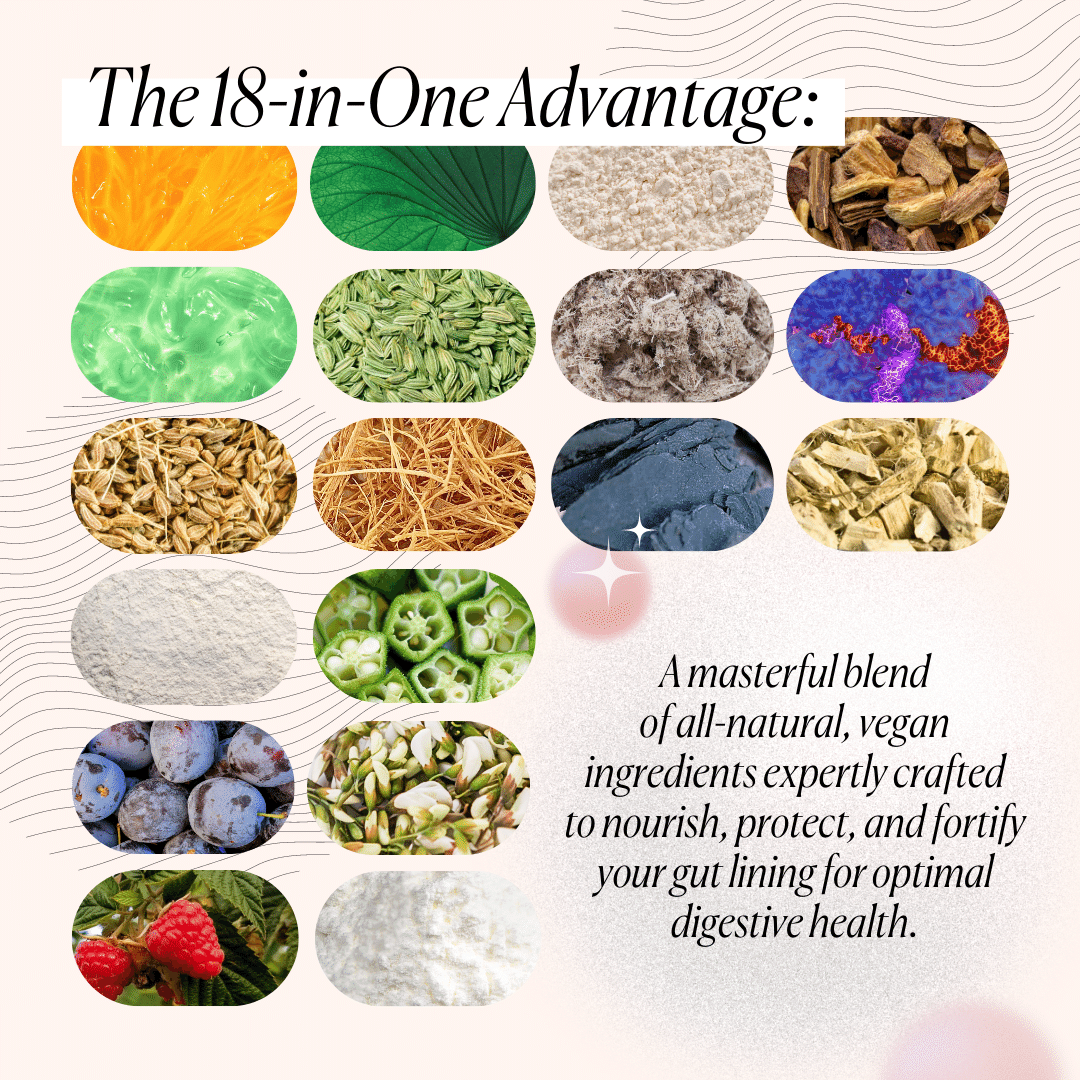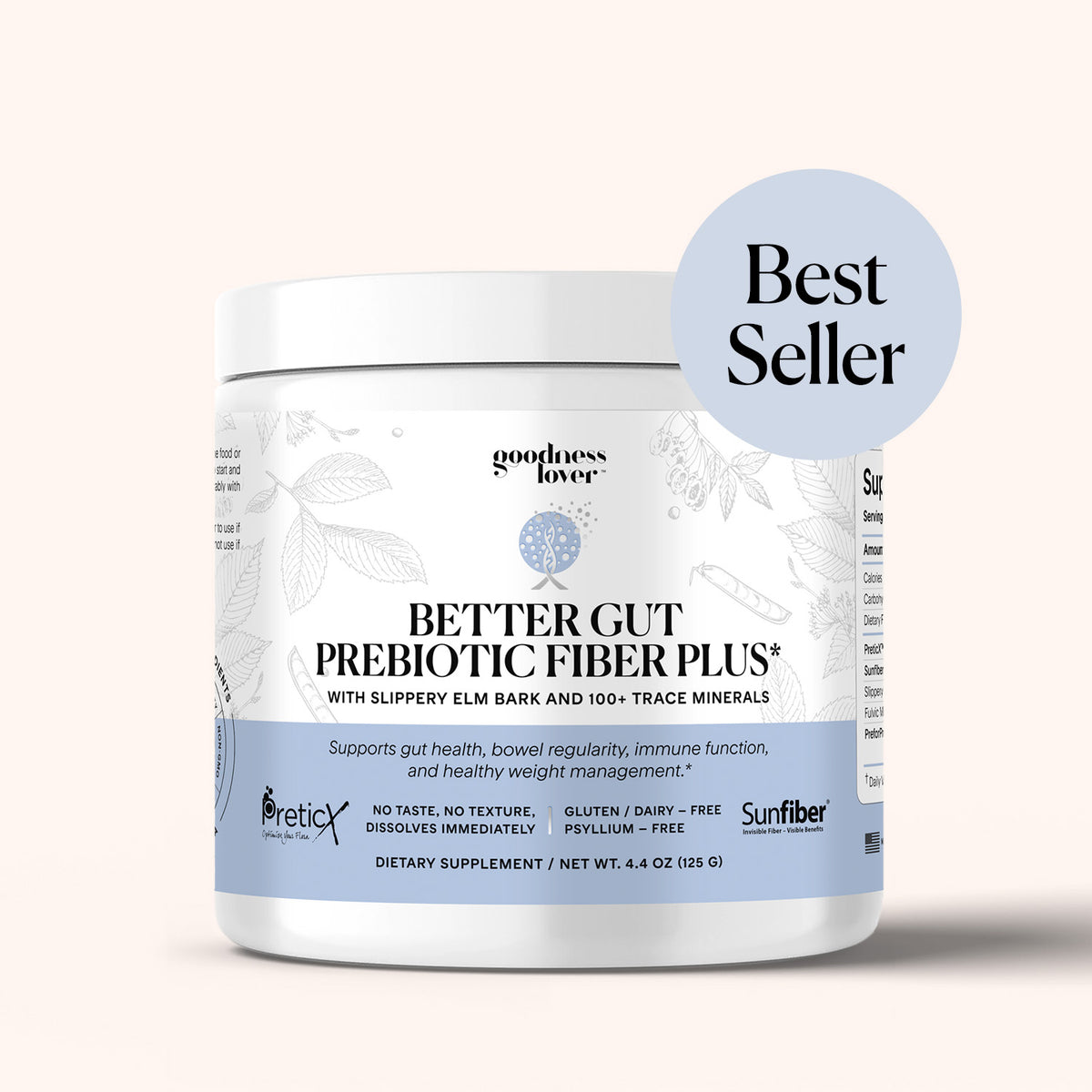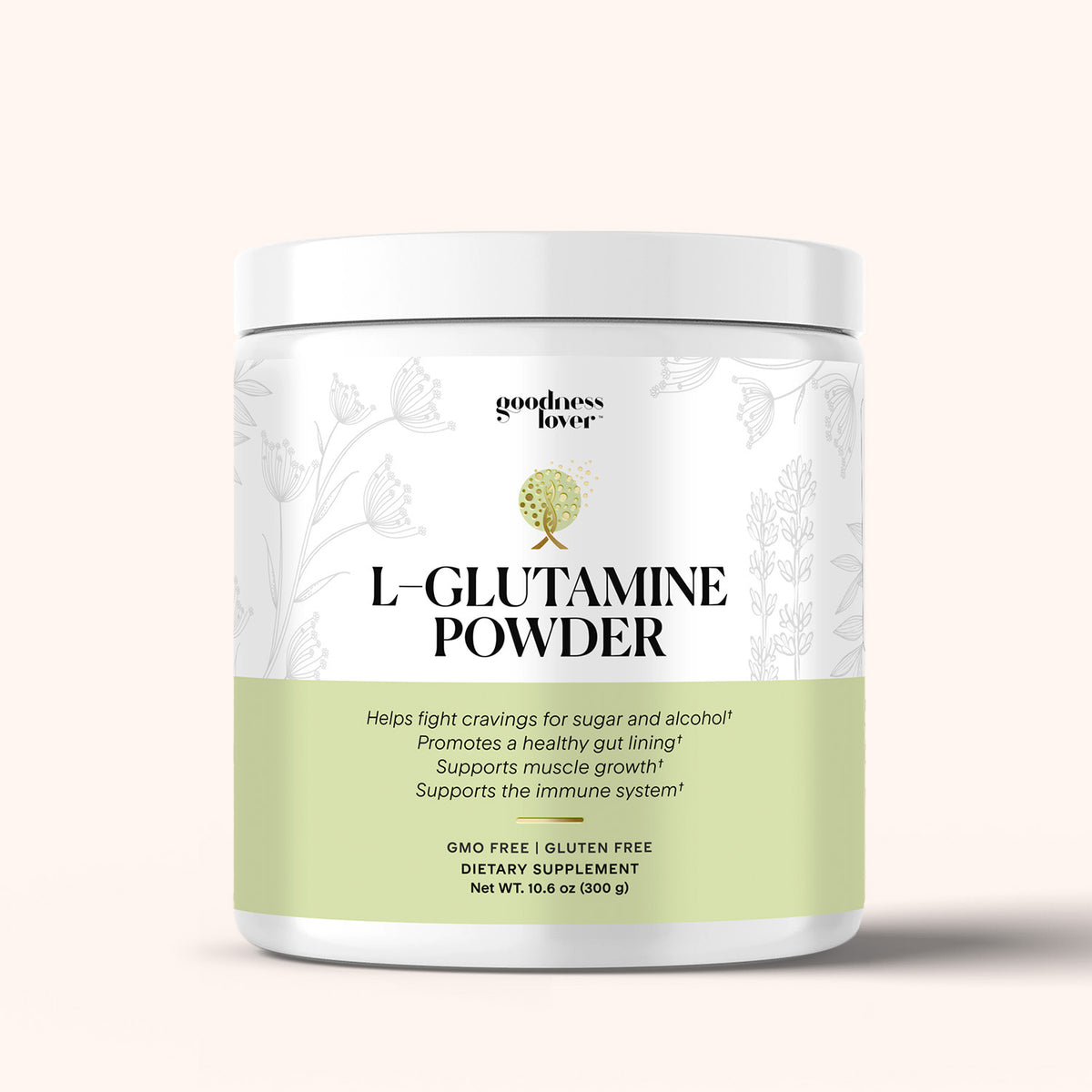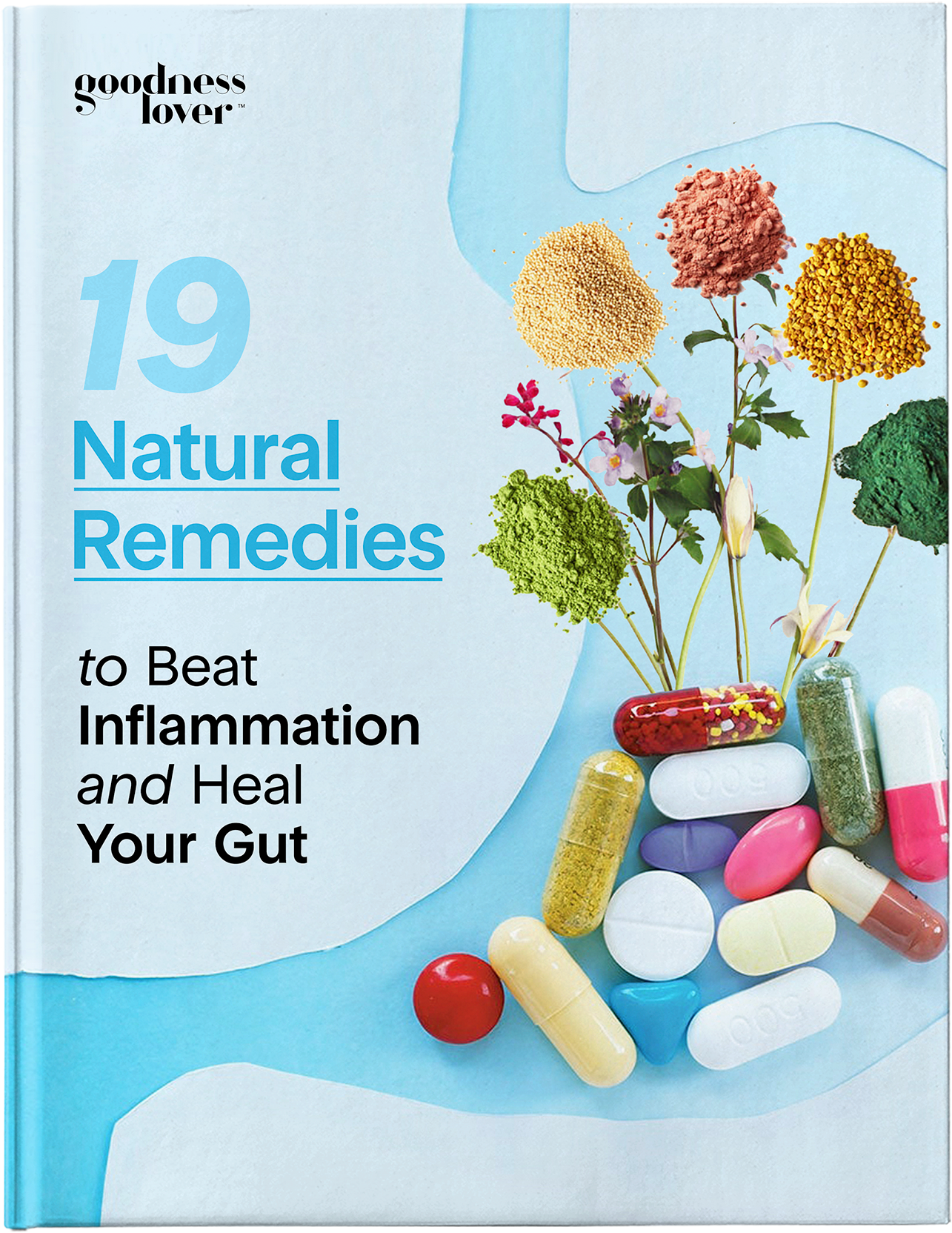Protein is all we hear about when it comes to diet and nutrition. Protein this. Protein that. We are not getting enough. How can we make sure we’re meeting our protein requirements? Of course, protein is important, but many of us would be getting too much of it anyway!
What we do not hear enough about is fiber.
When it comes to restoring health to our gut microbiome, which is key to improving our overall health and well-being and protecting us against disease, fiber is the first and potentially the most powerful solution.
Why? What it really boils down to is that fiber is the fuel for the army of gut microbes that inhabit our digestive tract.
However, fiber is an often overlooked and neglected nutrient. And most people eating the standard Western diet are not getting enough of it.
Table of Contents:
Are You Eating Enough Fiber?
In fact, only 6% of Americans obtain the recommended amount of fiber and fewer than 1 out of 10 adults in the UK meet the recommended dietary intake.
That’s because refined plant foods like white flour, white sugar, and vegetable oils have lost their fiber. Meat, fish, dairy products, and eggs have no fiber. In fact, the typical Western diet, which is composed of around 40% animal products, is very low in fiber.
However, in places around the world whthatre known to be home to some of the people who live the longest (places that are called “The Blue Zones”), fiber is a large part of their diet and is likely a contributing factor to their longevity.
In fact, one meta-analysis that included 17 studies and nearly one million participants, found that there was a 10% reduction risk for death for every 10 grams of fiber consumed per day. Those who consumed the most fiber were 19% less likely to die over a decade, compared to those who ate the least.
But let’s wind it back a bit.
What actually is fiber?
How does it benefit your health?
And how can you ensure you are getting enough in your diet?
What Is Fiber And Why Is It Important?
Fiber is found in the cell walls of plants, where it provides structure for the plant. It’s a group of complex carbohydrates which, when we eat, our body cannot digest. Instead, it remains untarnished as it passes through your mouth, stomach, and small intestines. And by the time it reaches your colon, it’s the same molecule that went into your mouth.
There are two forms of fiber: Soluble and insoluble.
Insoluble fiber doesn’t dissolve in water. It remains mostly intact in your body, and acts like a broom, cleaning out your digestive tract as it moves through.
Soluble fiber, on the other hand, does dissolve in water, forming a gel-like substance. Soluble fiber partially gets absorbed and provides about 2 calories per gram. It provides cushioning in the intestine and helps to bind unwanted components and cholesterol.
Both soluble and insoluble fiber are found naturally in plant foods and many plant-based foods have both. There is no fiber in meat, dairy products, fish, eggs, and oils. Processed foods made with refined flour generally contain very little, if any, because natural fiber is lost or removed in the process of refining.
Prebiotics And Resistant Starch
Soluble fiber also may act as a prebiotic, providing food for the bacteria in our gut. The bacteria feed on this fiber and produce short chain fatty acids (SCFAs) such as butyrate, which is our cells' primary source of energy. In addition, SCFAs help with weight loss by regulating appetite and improving fat metabolism.
If you don’t have enough butyrate, you suffer from inflammation which triggers leaky gut and compromises the blood-brain barrier. This can affect the production of brain-derived neurotrophic factor (BDNF) which supports your ability to learn, remember, and form new memories. It is regarded as a “fertilizer for the brain” because of the way it enhances our neuroplasticity.
Resistant starch also acts as a prebiotic and is a type of fiber as it “resists” digestion. Good sources of resistant starch include whole grains, potatoes, and green bananas. Resistant starch enhances insulin sensitivity and blood sugar control, promotes satiety (a feeling of fullness after eating), decreases toxin absorption, regulates inflammation, and improves digestive symptoms. 
The Health Benefits Of Fiber
So far, we’ve touched on just some of the health benefits fiber offers us.
Due to fiber’s impact on the gut microbiome and overall metabolic health, dietary fiber intake is associated with a reduced risk for the development of cardiovascular disease, type 2 diabetes, colonic cancer, and mortality.
In fact, a meta-analysis published in The Lancet that pooled the results from 243 studies also found that an intake of at least 25 grams of dietary fiber a day is associated with a lower weight, blood pressure, blood sugars, cholesterol, as well as a reduced risk of diabetes, heart disease, strokes, and breast and colon cancer.
What else does fiber do for us?
1. Fiber supports heart health
Fiber has a positive impact on cholesterol levels as it helps to prevent the reabsorption of cholesterol as it binds cholesterol and bile acids and transports them out of the body. This is important for reducing the risk of heart disease.
In fact, one meta-analysis found that the more dietary fiber you consume, the lower your risk of both cardiovascular disease and coronary artery disease.
2. Fiber helps regulate your blood sugar levels
Fiber slows down the rate at which nutrients are absorbed into the bloodstream, stabilizing the ups and downs of blood sugar levels. This is important in relieving hypoglycemia (low blood sugar) in the control of diabetes.
3. Fiber assists weight loss
Fiber assists with weight loss due to its impact on satiety.
Fiber-rich foods tend to require more chewing than low-fiber foods which may reduce the rate at which you eat, increase the feeling of fullness and therefore, reduce the total amount of food you consume. Also, foods rich in fiber may displace foods of greater caloric density. Even seeing a greater volume of food on a plate may help some people feel full.
Fiber can also directly affect satiety hormones as well as the glucose-insulin response. Finally, a high-fiber diet may decrease digestion and absorption of macronutrients, assisting in weight loss.
In one study, a diet that included at least 20 grams of fiber (higher than the average US consumption) and a slightly lower caloric intake, was given to participants who were overweight. Researchers found that, independent of the caloric restriction, fiber promoted weight loss.
4. Fiber improves regularity
Of course, one of the main roles fiber plays is that it helps you poop.
Fiber stimulates the intestines and helps prevent constipation. Not only is constipation uncomfortable and sometimes painful, but it may also increase your risk for various chronic diseases including cancer, hormonal imbalances, and cardiovascular disease.
5. Fiber can help prevent cancer
Fiber also reduces your risk for certain types of cancer, especially colorectal cancer. By helping to remove waste and improving intestinal transit time, fiber eliminates cancer-causing compounds before they become a problem.
Fiber also reduces the risk of breast and prostate cancer as well as cancers of the mouth and throat.
According to a study published in Pediatrics, the women who consumed at least 28 grams per day of fiber had a 24% lower risk of developing breast cancer before menopause, compared with women who consumed 14 g per day (the US average). Also, the women who consumed the highest amount of dietary fiber reduced their lifetime risk of developing breast cancer by 16%.
How Much Fiber Do You Need?
Now you know why fiber is good for you. But how much fiber do you need to be able to reap its benefits?
While guidelines do differ between countries, most professional health bodies recommended intakes between 25-35 grams per day for adults. Some experts even recommend higher amounts than what is recommended. For example, The Physicians Committee for Responsible Medicine (PCRM)’s recommendation for fiber is currently 40 grams per day.
If you are older than 50 years of age, the recommended amount lowers to 30 grams per day for men and 21 grams per day for women.
Unfortunately, most adults are only getting about half of the recommended amount daily.
How do I make sure I am getting enough fiber?
The best source of fiber comes from plant-based foods such as legumes (lentils and beans), nuts, whole grains, fruits, and vegetables.
Eating a wide variety of these foods is key to getting enough plant-based fiber in your diet. Here are some tips for getting more plant-based fiber in your diet:
- Aim to eat at least five servings of fruits and vegetables per day.
- Enjoy legumes three to four times weekly.
- Regularly consume nuts and seeds. Consume them as snacks or add them to smoothies, oatmeal, and even to salads.
- Familiarize yourself with what foods are high in fiber.
- Choose whole grains instead of white bread and refined flour products.
- Don’t fill up on processed or refined foods.
Fiber Supplements
Eating more prebiotic-rich foods isn’t always easy for those who are highly reactive to fermentable fibers such as those with irritable bowel syndrome (IBS) or small intestinal bacterial overgrowth (SIBO). Large amounts of prebiotic fiber provide an abundance of food for a range of gut bacteria. This can result in an excess of gas in the intestine, causing abdominal pain and discomfort.
If that’s you, often supplementation with a well-tolerated, shorter-chain prebiotic is the best place to start. Also, when introducing any prebiotic fiber, start with a low dose and slowly increase the amount over a number of weeks to build tolerance, monitoring your symptoms as you go.
Partially hydrolyzed guar gum (PHGG) is one of the best options for those who are sensitive to bloating and gas from fermentable fibers. This is a prebiotic powder that you can add to your smoothies that promote the growth of beneficial bacteria in the gut and works effectively to regulate bowel motions.
Some other easily obtainable prebiotic supplements include:
- D-mannose
- Acacia fiber
- Glucomannan
- Larch arabinogalactans
- Green banana flour
- Fucoidan
When choosing a prebiotic fiber supplement, it is best to purchase from a quality-controlled, transparent, reputable source. Check for the amount of fiber present as some supplements contain only a few milligrams of prebiotics which is not sufficient to offer any substantial benefit. You want to aim for about 2 grams in one capsule. 
Be careful as some “prebiotic” supplements actually contain mainly non-prebiotic forms of fiber so be sure to check that the ingredients contain fermentable insoluble fibers such as inulin and oligofructose. Try to purchase those which have 100% natural sources and avoid using synthetic prebiotic supplements.
Final Thoughts
While it is important for most people to get the recommended amount of fiber per day, there are some final considerations.
It is important to remember that when you increase your fiber intake, you should also increase your water intake. Everyone’s needs are different, but a common cause of gastrointestinal distress in those who eat plant-based is too much fiber without enough liquid.
And If you’re new to eating a lot of fiber, be sure to add it to your diet slowly, because increasing your fiber intake too quickly can cause bloating and gas. When your body becomes used to the increase in fiber, you probably won’t experience any discomfort.
So now you know why fiber is good for you, and how to get enough fiber in your diet, you can challenge yourself to eat 40 grams of fiber per day. The more plants you eat, the easier it will be to reach your goal. And trying new recipes and fun ways to include more fiber-containing foods into your diet makes the whole process more enjoyable.
Recipe Spotlight: Chocolate Coconut Truffles
Speaking of trying fun and new recipes, we have a chocolate coconut truffle recipe for you. This includes ingredients that can help you hit your target fiber goal for the day, including bananas, almonds, sunflower seeds, chia seeds, and more fruits.
This decadent dessert is incredibly easy to make and you can make 12 of them in one go. Adjusting your diet may not be the easiest thing to do, but you’ll find that you won't be bereft of options, may it be in dish choices or flavors. All you need is a little creativity. Give this a try and let us know how it goes!














What Do You Think? Comment Below: